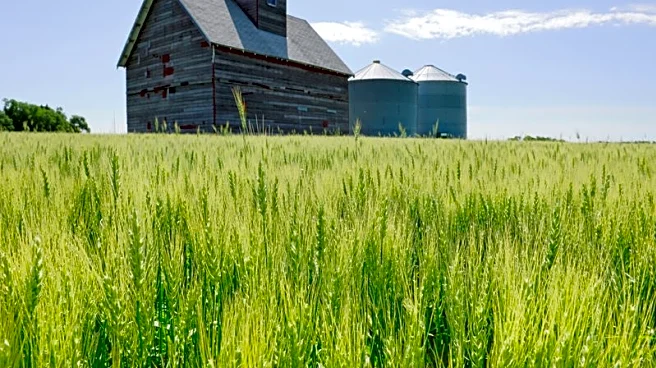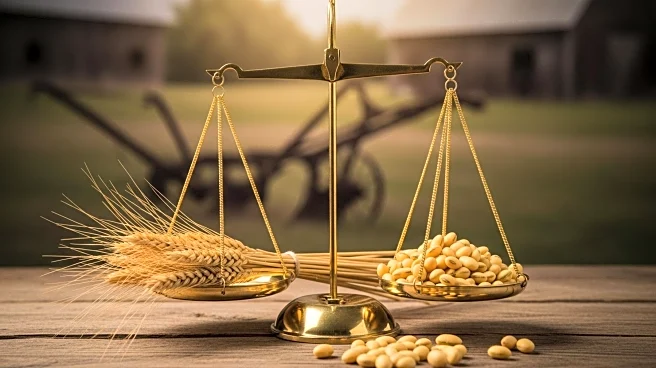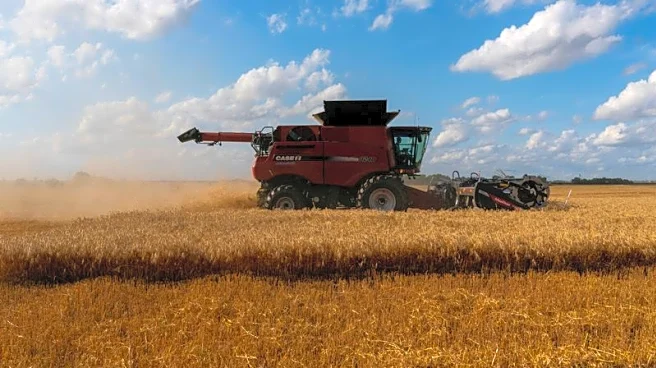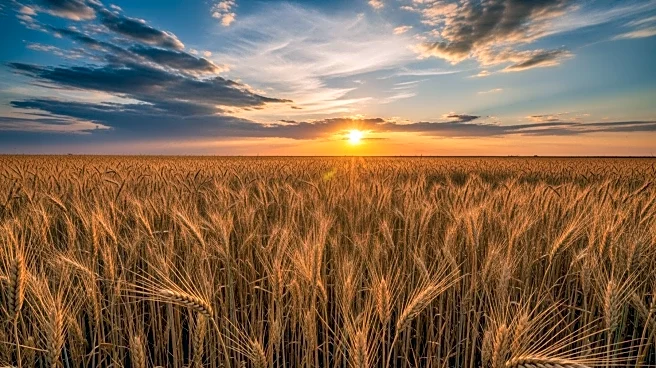What's Happening?
American farmers are experiencing significant economic pressures due to record production levels and declining prices for key crops such as soybeans and corn. Heath Donner, a farmer in Arkansas, reports that despite the availability of farming machinery, financial constraints prevent many farmers from purchasing new equipment. The U.S. Department of Agriculture anticipates record yields for soybeans and corn, but prices have dropped significantly, with soybeans down 40% and corn down 50% from their peaks in 2022. The National Corn Growers Association highlights the ongoing economic crisis in rural America, exacerbated by high production costs and trade tensions, particularly with China, which has shifted its soybean purchases to Brazil.
Why It's Important?
The economic challenges faced by American farmers have broader implications for the rural economy and the agricultural sector. As farmers cut back on spending due to low profitability, there could be ripple effects on local economies and related industries. The situation is further complicated by trade disputes, which threaten the stability of export markets for U.S. agricultural products. The Trump administration has announced subsidies to support farmers, but these will not be available until late 2026, raising concerns about immediate financial relief. The ongoing trade tensions with China, a major importer of U.S. soybeans, could lead to prolonged economic difficulties for farmers.
What's Next?
Farmers and trade groups are urging the Trump administration to address trade barriers and negotiate new deals to stabilize export markets. The administration has announced plans for subsidies, but farmers are seeking immediate assistance to bridge the gap until these funds are available. The potential for further trade negotiations with China and other countries could impact the agricultural sector's recovery. Additionally, the development of new export markets is crucial to offset the loss of Chinese demand, but this process is complex and may take time.












